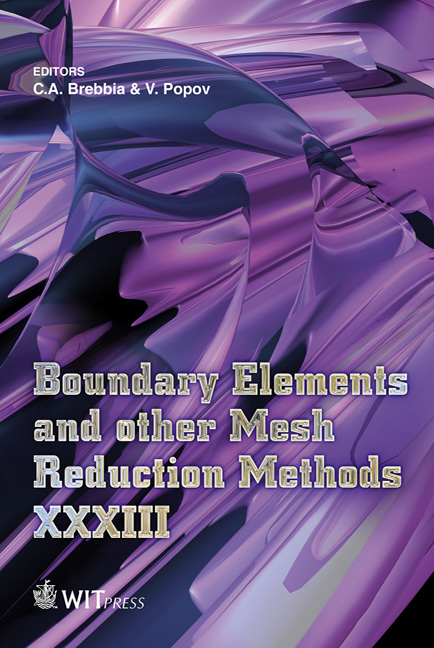Modification Of Gauss-Chebyshev Quadrature For Modelling Of Crack Growth In The Field Of Residual Stresses
Price
Free (open access)
Transaction
Volume
52
Pages
10
Page Range
15 - 24
Published
2011
Size
363 kb
Paper DOI
10.2495/BE110021
Copyright
WIT Press
Author(s)
A. N. Galybin1,2 & S. M. Aizikovich3
Abstract
A modification of the Gauss-Chebyshev quadrature for solving singular integral equations appearing in plane fracture problems is proposed. This modification is aimed at accurate modelling of the crack growth in non-homogeneous stress fields, which is the case that presents certain difficulties because the positions of collocation points on the crack vary with the crack length. In the proposed modification they are fixed, which extends the application of the well-established technique for oscillating or piecewise loads acting on the crack surfaces. In the latter case, despite lowering the degree of approximation, the proposed method provides better accuracy in calculations as confirmed by comparisons of numerical and analytic results for some examples. Keywords: singular integral equations, quadrature, crack, residual stresses. 1 Introduction Some natural and artificial materials exhibit considerable level of residual stresses. The latter can significantly change fracture characteristics of the material and affect crack propagation. In practice the residual stresses are rarely known as continues functions of spatial coordinates but they can routinely be measured at discrete points. It is, therefore, important to possess accurate numerical methods for the prediction of crack behaviour based on experimental data. This paper is aimed to adapt the Gauss-Chebyshev quadrature method for studying crack propagation in elastic media under combined load of external and internal non-homogeneous stresses.
Keywords
singular integral equations, quadrature, crack, residual stresses





